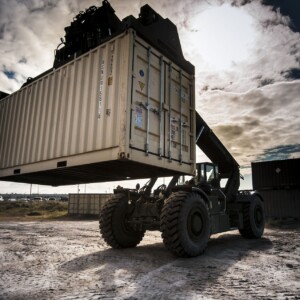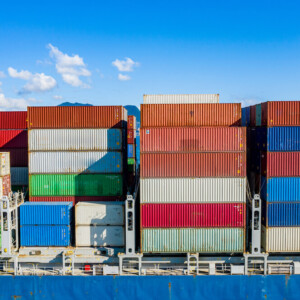In the dynamic logistics and modular architecture world, two heavyweights reign supreme: Conex boxes and shipping containers. While they may appear similar to the untrained eye, each has unique features and uses that set them apart. The question arises: What is the difference between a Conex box and a traditional shipping container? In this blog post, we will delve deep into these storage titans, explore their fascinating histories, and demystify the specific characteristics that distinguish one from the other. Whether you’re a logistics professional, an architect, a storage-needs enthusiast, or simply curious, join us as we unpack the differences between Conex boxes and shipping containers.
What is a Conex Box?
A Conex box, also known simply as a shipping container, is a sturdy metal box made from strong, rust-resistant steel. The name “Conex” combines the words ‘container’ and ‘express,’ meaning these boxes are made to store and move things quickly. These boxes typically come in two sizes: 20 feet long and 40 feet long.
The History of Conex Boxes
Conex storage containers are shipping containers that were first made during the Korean War. They were used to send supplies to soldiers on the front lines. Before Conex boxes, people used containers made of aluminum, but they could be easily damaged and broken into. As a result, the US Army developed the “Transporter,” made of steel, making it more durable and secure.
In the 1960s, shipping companies saw that it was important for shipping containers to be more modular, like building blocks so that they could be easily stacked onto one another. This standardized size also made it easier to transfer containers between different modes of transportation, such as trucks, trains, and ships.
About Shipping Containers
Shipping containers are standard-size metal boxes for transporting goods across sea, rail, and the road. They’re mostly made from Corten steel that doesn’t rust fast and can handle the crazy weather on the ocean. Furthermore, They have grooves in the metal that make them strong and not break easily. Shipping containers come in different sizes, but 20 feet and 40 feet ones are used the most.
The corners of these containers are extra strong, so you can connect them to other containers or hook them up to cranes to lift them. Unique slots on the bottom side let you move them with a forklift. Like Conex boxes, shipping containers are watertight and will be labeled with a plate that mentions they’re sea-worthy by the Convention for Safe Containers.
Features of Conex Boxes and Shipping Containers
To better understand the similarities between a Conex box and a shipping container, it’s helpful to look at their similarities.
Watertight
Most of the time, new containers are watertight and can keep water out entirely. A suitable container for the sea won’t let water in because it has unique rubber around the doors to block water and other stuff from getting inside.
Durable and Reliable
Containers are made strong to handle being moved across the ocean, so they last a long time, and you can count on them to complete the journey.
Size
Both of these containers come in 20-ft or 40-ft sizes. This means they can fit on most trucks or trailers without any trouble. It’s easier to take them to the seaport than bigger containers. On a ship, they can be moved around and stacked up well. The International Organization for Standardization determines shipping container designs and sizes.
So, What is the Difference Between Conex Boxes and Shipping Containers?
Over time, the container storage industry has started calling their products many different things. For most people who don’t work with them daily, all these names mean the same thing. These containers are large, rigid steel boxes that keep stuff safe in harsh weather and transport cargo across the sea.
They have so many names because of where they come from or how people use them over time. For example, “Conex box” started with the U.S. military in the Korean War. It’s short for “Container Express.” Even though Conex boxes are the same as regular shipping containers, they were made in 1952 to move military supplies quickly to the battle lines.
Ways to Use Conex Boxes and Shipping Containers

These days, shipping containers/Conex boxes are for more than just shipping. People use these containers for lots of different things, including:
- Shipping goods over sea or rail
- Warehouse storage (equipment, tools, goods)
- Additional home storage
- On-Site storage
- Creative living spaces, commonly known as ‘tiny homes’
- Modular offices
- Emergencies (temporary shelters or medical facilities)
- Pop-up shops, bars, or exhibition stands
Which Container Should You Choose?
Choosing between a Conex box or a regular shipping container is straightforward. It all comes down to how much stuff you have, how heavy it is, and how many containers you need. Use a Conex box if you’re shipping small goods requiring only a little room or extra protection. If you have many large items that aren’t that heavy, consider whether a 20-foot or 40-foot shipping container is right for you. If you’d like a quote, contact us, or simply reach out with any questions you might have.
Conclusion
Shipping containers have significantly changed how we handle logistics and design buildings. These large metal containers do more than move goods now; they’re critical to both fields for their flexibility and toughness. Shipping containers are unmatched in meeting today’s complex shipping needs and construction. Businesses and homeowners have reused them for different needs, like storage or building cutting-edge homes. Looking ahead, these containers will keep leading the way, showing us how to use materials smarter and build a future full of new possibilities.





